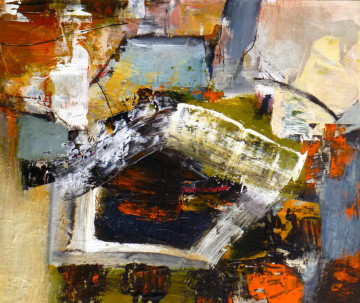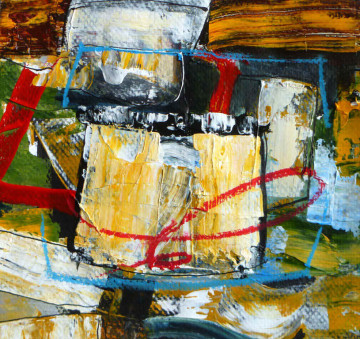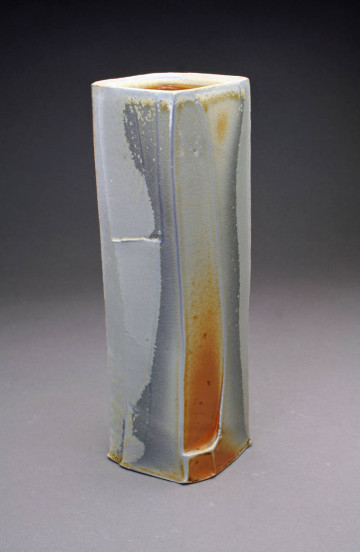Jaap Eduard Helder and Jody Johnstone
July 2- 28, 2013
Opening Reception Friday July 5th, 5-8pm
Jaap Eduard Helder
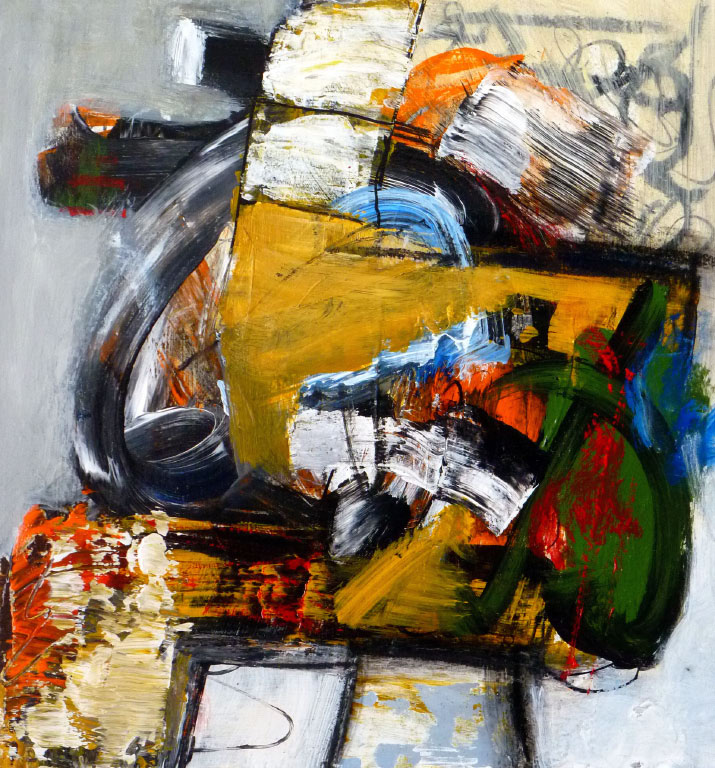
Jaap Eduard Helder
Out There Like This
acrylic on paper
7.5″ x 6.5″
Bio
Jaap Eduard Helder was born in 1950 in the industrial town of Velsen Holland. The landscape of industrial shapes and colors of post World War II rebuilding, became an integral part of the imagery for Jaap’s paintings.
Helder went to the classical school to study Latin, Greek, German, French, and English but his interests were primarily in the arts and music. He started drawing and painting classes accompanied by his father, a portrait and landscape painter. Helder was influenced by Escher, Mondrian, Karel Appel, and American jazz, which began his attraction to the United States. He traveled around Europe and was inspired in particular by Israel and its landscape before finally settling in the United States and moving to Maine.
In Maine, Helder became acquainted with several artists who influenced and encouraged his work, including John Hultberg, an artist who had worked in Paris, New York, and on the West Coast. In the late 1980s, Helder continued to paint, exhibit, and sell paintings. In 1993 he was included in a group show called “The Painter’s Theater”, organized by George Lloyd. The show included such artists as Robert Colescott, Richard Merkin, Trevor Winkfield, and John Hultberg.
In 1998 Helder moved to Eastern Maine, where he continued to paint. The unspoiled, raw beauty of the Down East landscape, where the blueberry barrens meet the rugged coastline of the Atlantic Ocean, is a strong source of inspiration for his most recent work. He currently lives in Belfast.
Helder’s paintings are in numerous private and corporate collections.
Artist Statement
For most of my life, painting has been my passion. Through art I can express the wonder and the curiosity I feel about the world I live in. My work is an intuitive improvisation on nature and on the impressions of daily life. Through a process of psychological realism, visual elements are restructured into an abstraction of the landscape and the figure.
Living in coastal Maine, I am inspired by the raw beauty of the landscape and the Atlantic Ocean, the worn surfaces I see around me, especially the ships in the harbors with their many layers of industrial paint, scratched and marked and worn down by the elements.
Through the relationship of colors, forms, and marks, through rhythm and balance, and the physical and psychological work of painting, each picture develops into a unique expression. Using visual suggestions, I draw the viewer into an imagined landscape, into a colorful, dynamic world that hovers between the abstract and the representational.
Jody Johnstone
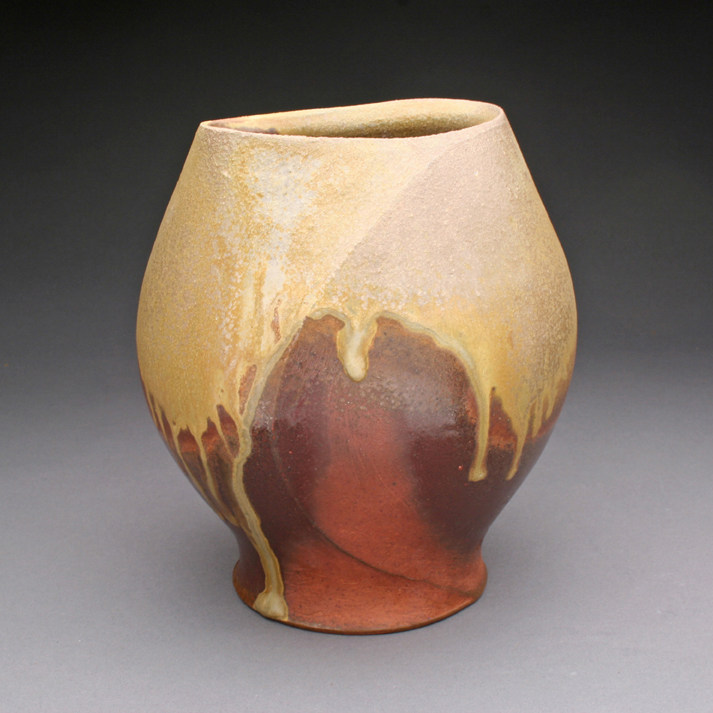
Jody Johnstone
Sculpted Vase
stoneware, anagama fired, unglazed
7” x 6 1/2” x 6”
Bio
Jody Johnstone first became interested in pottery when she was in her early twenties living and working in Japan. It was a few years later that she took a pottery class and worked towards her goal of becoming a full time potter. Eventually she was offered a chance to apprentice for two years with Bizen master Isezaki Jun. She moved to Swanville, Maine in 1996, designed and built a 24-foot long Anagama tunnel kiln and began making pots. She has shown all over New England, including CMCA in Rockport, Maine, the Worcester Center for Crafts in Worcester, Mass. and the New Hampshire Institute of Art, Manchester, NH. Her work has been included in numerous publications, many private collections and is in the permanent collection of the Corning Community College in Corning, NY.
Artist Statement
I built my anagama kiln in 1997 after returning from a two-year apprenticeship in Bizen, Japan with National Living Treasure, Jun Isezaki. My kiln is 24 ft. long and holds about 800 pots. I do two eight day firings a year. The kiln is stoked by a crew of four. Each firing requires about 6 cord of wood which is a mixture of local Maine hardwoods: ash, beech, maple, oak and a little birch and scrap cedar and poplar from local sawmills. Most of my pots go into the kiln with at least the outer surface unglazed and rely on clay body, natural ash deposits, loading and flame patterns and placement in the kiln to achieve a wide range of effects. Flatware is generally stacked with rice straw between the pieces to achieve further decorative effects.
I fell in love with pottery and woodfiring together and to me they are inseparable. I’ve never done anything else. I want my pots to be both strong and soft, to embody my sense of beauty and rightness. The long firing adds richness and depth, and introduces just the right element of chance and mystery to keep me from trying to be too precise with my work.
Woodfiring is a lifestyle too and the anagama fills the needs I have to make lots of pots, to stack wood and do other physical, mind-clearing work, and to sit and enjoy a quiet shift with the kiln. I relish the community of potters and firing friends that gather around the kiln twice a year. I enjoy the rhythms of the process and the scale that I work on as it makes me feel connected to the seasons, strong and competent.
- Jaap Eduard Helder The Three Fives acrylic on paper 6″ x 7″
- Jaap Eduard Helder Untitled acrylic on paper 6″ x 6″
- Jody Johnstone Faceted Vase white stoneware, anagama fired, unglazed 9” x 2 3/4” x 3 2012
